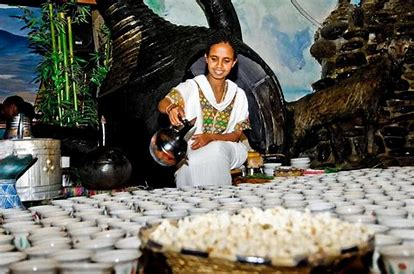The Ultimate Guide to Ethiopian Coffee: A Journey Through History, Flavor, and Culture
Ethiopia, the birthplace of coffee, offers a rich tapestry of history, culture, and unparalleled flavor. From ancient legends to modern-day brewing techniques, this blog delves into the essence of Ethiopian coffee, revealing why it remains a global favorite among connoisseurs
1. The Birth of Coffee: A Legend Steeped in History
Ethiopia’s coffee story begins with the legendary goat herder, Kaldi. Around 850 AD, Kaldi noticed his goats dancing energetically after eating red berries from a shrub. Curious, he sampled the berries and felt invigorated. Monks later roasted and brewed these beans, creating the first coffee drink to aid their prayers .
Beyond myth, Ethiopia’s wild coffee forests in Kaffa have nurtured Coffea arabica for millennia. By the 15th century, coffee spread to Yemen and beyond, but Ethiopia’s genetic diversity—home to 90% of Arabica’s genetic material—remains unmatched, offering disease resistance and flavor complexity .
2. Ethiopia’s Coffee-Growing Regions: A Symphony of Flavors
Ethiopia’s diverse microclimates and altitudes produce distinct coffee profiles. Key regions include:
Yirgacheffe: Renowned for floral, citrus, and jasmine notes, often compared to Panama’s Geisha. Washed processing highlights its tea-like delicacy.
Sidamo (Sidama): Bright acidity with fruity undertones like blueberry and lemon. High-altitude farms yield crisp, complex cups.
Harrar: Dry-processed beans with bold, winey flavors and hints of blueberry. A favorite for espresso blends
Guji: Organic, wild-grown coffees with floral sweetness and stone fruit notes.
Limu: Balanced body with spicy, chocolatey undertones .
3. Processing Methods: Natural vs. Washed
Ethiopian coffee’s flavor hinges on its processing:
Natural (Dry): Cherries dry in the sun, infusing beans with fruity, syrupy sweetness (e.g., blueberry notes in Harrar) .
Washed (Wet): Fruit is removed before drying, yielding cleaner, brighter profiles with floral acidity (common in Yirgacheffe) .
4. The Ethiopian Coffee Ceremony: A Ritual of Community
Coffee is more than a drink—it’s a sacred ritual. The ceremony involves:
Roasting green beans over charcoal, filling the air with aroma.
Grinding beans with a mortar and pestle.
Brewing in a jebena (clay pot), served in three rounds: Abol (strong), Tona (medium), and Bereka (mild)
https://www.bing.com/videos/riverview/relatedvideo?&q=ethiopian+coffee+ceremony+picture&&mid=1B23185294CEDFD7EFF91B23185294CEDFD7EFF9&&FORM=VRDGAR


Comments
Post a Comment